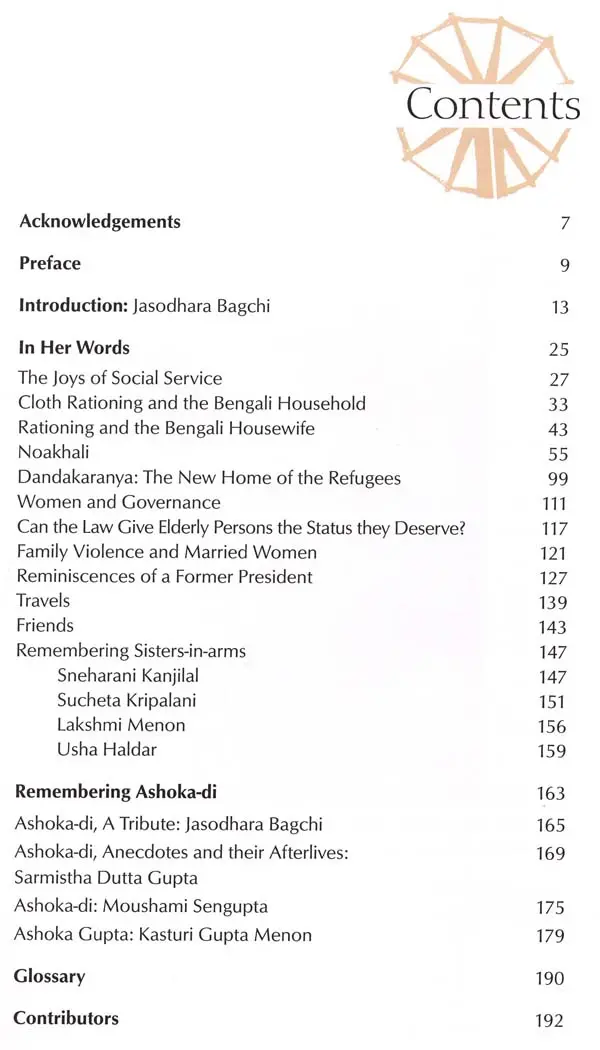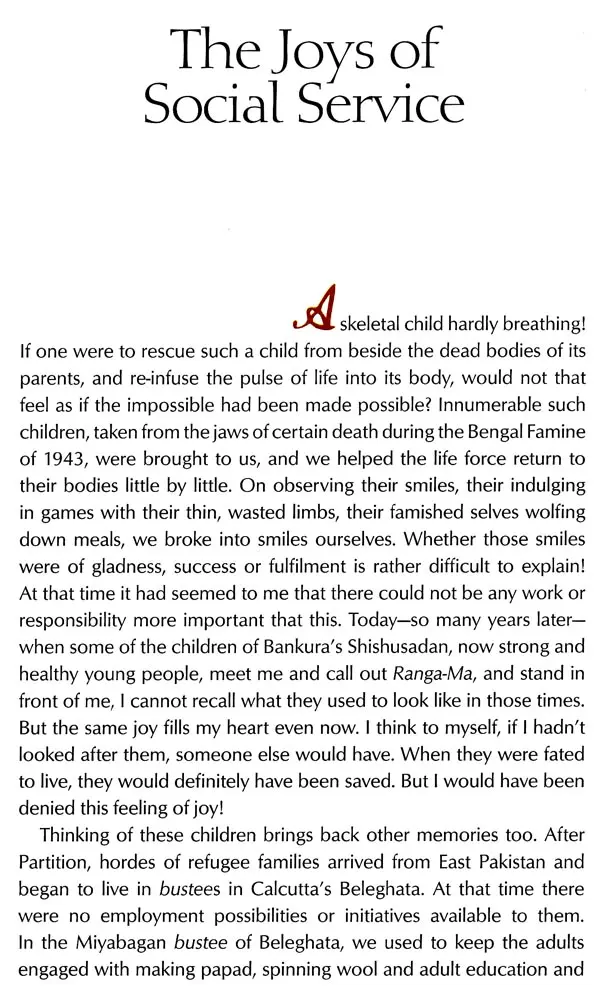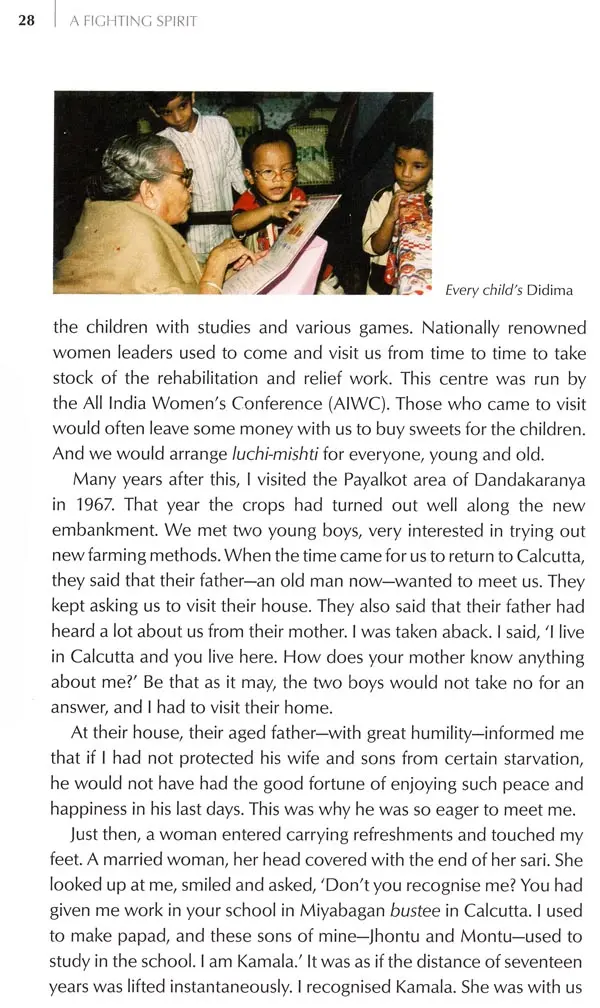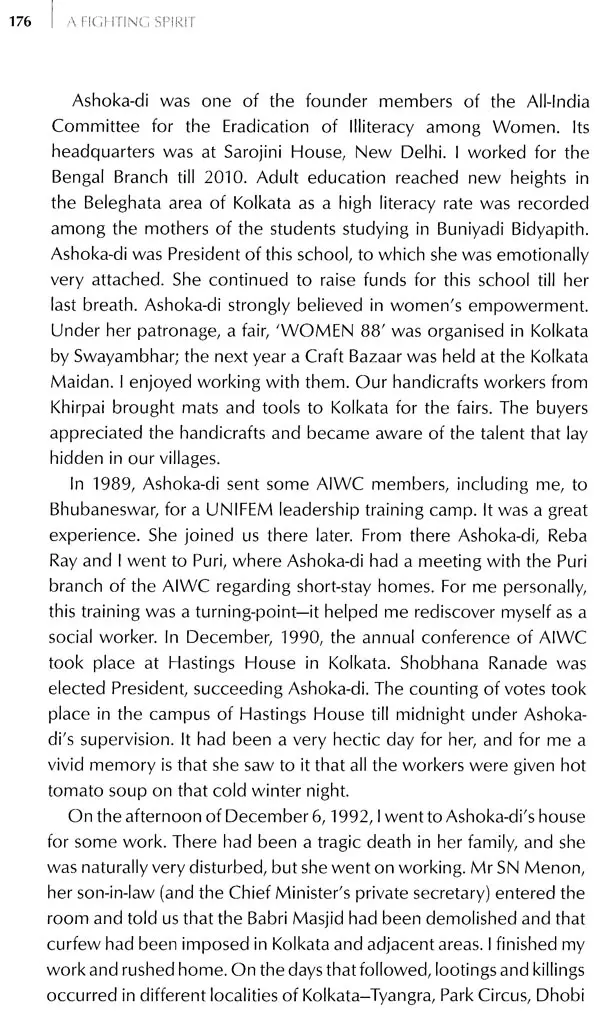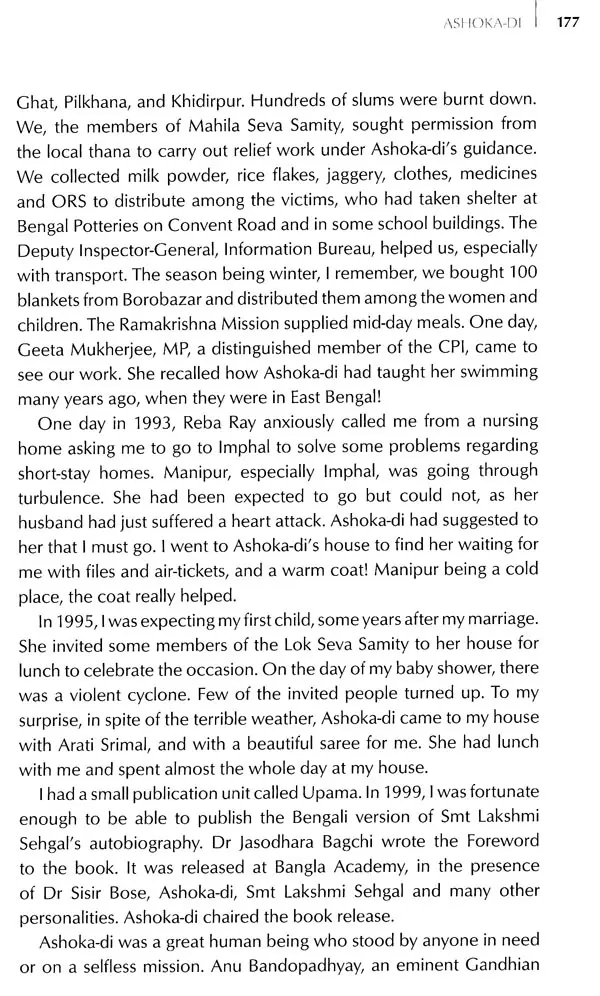
A Fighting Spirit (Selected Writings of Ashoka Gupta)
Book Specification
| Item Code: | UAJ829 |
| Author: | Sarmistha Dutta Gupta and Narayani Gupta |
| Publisher: | Niyogi Books |
| Language: | English |
| Edition: | 2013 |
| ISBN: | 9789381523650 |
| Pages: | 191 (Throughout Colour Illusterations) |
| Cover: | HARDCOVER |
| Other Details | 9.50 X 6.50 inch |
| Weight | 590 gm |
Book Description
An active career spanning seven decades is unusual. And to describe Ashoka Gupta (1912-2008) simply as a 'social worker' is not enough. Till the last day of her life, she was a dynamo, who generated exhilaration and energy in those around her. In this volume, we have tried to capture her personality through her own writings and through the recollections of others. The earliest piece by her was published in 1945, the last written in 2004. They vividly convey the ethos of the times—the terrible 1940s, through war, famine, riots, and Partition—situations when actions spoke more strongly than words. The tragedy of Partition was overtaken by the excitement and anticipation of nation-building. For Ashoka Gupta the ideals of the Indian constitution were realistic, and needed to be strengthened by ceaseless hands-on work at the grassroots. Twenty years later, she stood by her husband to battle the injustices done to the refugees from East Pakistan who had migrated in the 1960s and were being 'rehabilitated' in the wilderness called Dandakaranya. This book will be of value to scholars of history, sociology and women's studies, for those working on Mahatma Gandhi, on communitarian relations, on legislation pertaining to women, and on institutional frameworks, particularly the All-India Women's Conference.
The afternoon of July 8, 2008—the day she left us...an empty chair, a long bell-cord, two tables piled with books and papers, clips, a stapler, a clip-board, and a cordless phone. A young woman came in smiling, asking for Mashima, explaining that she had come all the way from her village by train to see her, a four-hour journey. She refused to believe what we told her and went into the inner room to look for Mashima... It took us all a long time to get used to the empty chair. When you went up the steps to 404/5 Gariahat Road in Kolkata, Ashoka Gupta would be sitting in her low-slung chair facing the door; if you went into the inner room, she would be at the head of the dining table. Her smile greeted every visitor. She was available for everyone, for every phone-call, from 8 in the morning till 10 at night. At 95 years of age, she had the energy of a 21-year-old and the enthusiasm of a child for whom every day held new delights. Absorption in work was her way of conquering the loneliness she suffered after the passing of her husband in 1989 and the terrible grief of the loss of her son Partha Sarathi in 1999 and her daughter Shakuntala in 2003. There were traces of her work everywhere—in every room there were cupboards and makeshift shelves stuffed with papers. We, bewildered, began by piling all the books, papers and tapes in one room. One person who could have made sense of it all was Shakuntala (Kunta), her eldest daughter, who lived in Kolkata. For two decades, quietly and competently, she had been her unofficial secretary, and had inherited the mantle of the Girl Guides movement—and made time for this in the interstices of teaching and research, and the shared responsibilities of a joint family. But Kunta had left this world, quietly and without fuss, five years earlier. In her absence, the work was being done by Krishna, the housekeeper, and Singeswar, Ashoka Gupta's Man Friday. Singeswar could read Hindi, Bangla and English, and not only was totally devoted to her but had acquired some of her encyclopaedic memory. And then came the wonder-worker—in the form of Tapan Khan, who brought order into the chaos, and sat day after day, month after month, working every minute with silent concentration, sorting it all. It was not easy—official reports were interleaved with restaurant menus and scribbled phone numbers, letters were not in any order with bundles stuffed into shoeboxes or ragged handbags, Christmas cards were separated from their respective envelopes which made it impossible to identify the senders, and photographs had no indication of where and when they were taken...However, this was not the disorder of an indolent person, but of someone who had so many irons in the fire that she did not allow herself time to take a break between different activities, and moved breathlessly from one to the next. And it did not matter as long as she was alive—she knew exactly where everything was, no matter how randomly placed—the colour of the file, the shelf where it had been put. She did not use a computer because she did not need one—she was as good as a computer herself. She had explained why she had such a vivid memory—it was because every day for her was full of meaning and purpose. As Gopal Gandhi said: 'For Ashoka-di, there was no pausing between activities. It was an incessant commitment to the service of the people'.
**Contents and Sample Pages**

